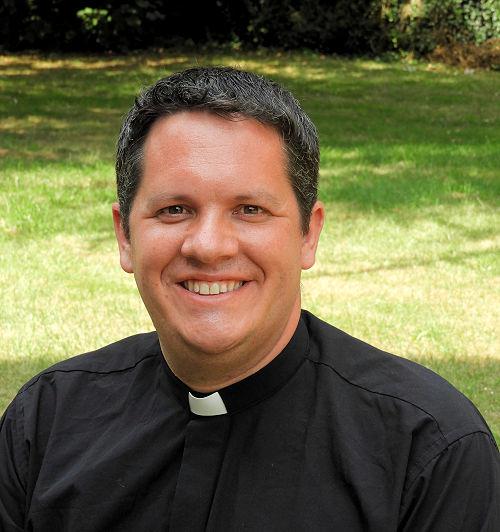Vicar's Letter
August/September 2023

Do you have a favourite hymn? I'm sure that many of us do. One of my personal favorites is I Heard the Voice of Jesus Say, which is often set to the tune ("Kingsfold"), a tune harmonized by Ralph Vaughn Williams and published in The English Hymnal.
The tune Kingsfold was originally used for a folksong called Lazarus and Dives, a popular reworking of the Biblical parable (Luke 16:19-31), it is a very simple, but memorable tune and the kind of thing that Vaughn Williams liked to include in his hymnal. The tune was obviously one that had a deep effect on Vaughn Williams as he turned it into his Five Variants on Lazarus and Dives, which gets an outing on classical radio quite frequently.
Hymns have been an important part of Church life from its very beginnings. The disciples are said to have sung a hymn as they headed to the Mount of Olives before Jesus's crucifixion (Matt 26:30), in his Acts of the Apostles, Luke describes the early Christian community engaging in "prayer and singing hymns" (Acts 16:25), and St. Paul often commends the singing of hymns and spiritual songs (e.g. Eph 5:19; Col 3:16). These hymns were probably psalms or psalm-like texts, which had formed an important part of Jewish worship and were taken up by early Christians.
The use of hymns continued into the life of the early Church, with people like St. Ephrem the Syrian (d. 373) writing a great many hymns, some of which have made their way into modern hymnbooks, such as his Strengthen for Service. These hymns would have been sung rather differently to the way we sing hymns now, and they probably would have been chanted by a soloist or in unison by a choir. But, nevertheless, many in the early church understood the power that combining words and music could have on congregations. During the Reformation, when people began to engage with the Bible in English, one of the first things to emerge were metrical psalms - these no longer needed to be chanted in plainsong in Latin, but were transformed into congregational singing in the vernacular. One of the most famous of these is The Lord's My Shepherd, I'll Not Want, which comes from the Scottish Psalter of 1650. These metrical hymns soon developed into what we would recognize as hymns.
Setting words to a tune can often make them much more memorable. A good tune can also reach into our hearts and move us emotionally. This is something that Charles Wesley understood very well, leading him to write a great number of hymns with powerful words and stirring music. Modern hymn writers like Graham Kendrick and Stuart Townend also show that hymns still play an important part in worship and that they can be reinvented for every generation.
On Sunday 13th August at 3pm, Churches Together will be holding "Hymns on the Green" in the churchyard of St. Mary's, Eaton Bray (note that it won't be on Edlesborough Green this year), where we will be rejoicing in the tradition of hymn singing and looking at the stories behind some of our favorite hymns. There will be refreshments afterwards! So, this month, I invite you all to think about your favourite hymn. How does it move you? How does it impact your faith? What do the words say and why are they important to you? But most importantly, have a good sing!
God bless,
Rev'd Stephen Burge
Letter Archives
2023
- February 2023
- March 2023
- April 2023
- May 2023
- June 2023
- July 2023
- August / September 2023
- October 2023
- November 2023
- December 2023
Other Years
About the Vicar's Letter
The Vicar's Letter has been appearing in the villages Focus magazine since August 2002.
The Rev. Peter Graham also used to publish The Vicar's Letter in the parish magazine of 1964. Please see the Vicar's Letter area for these.